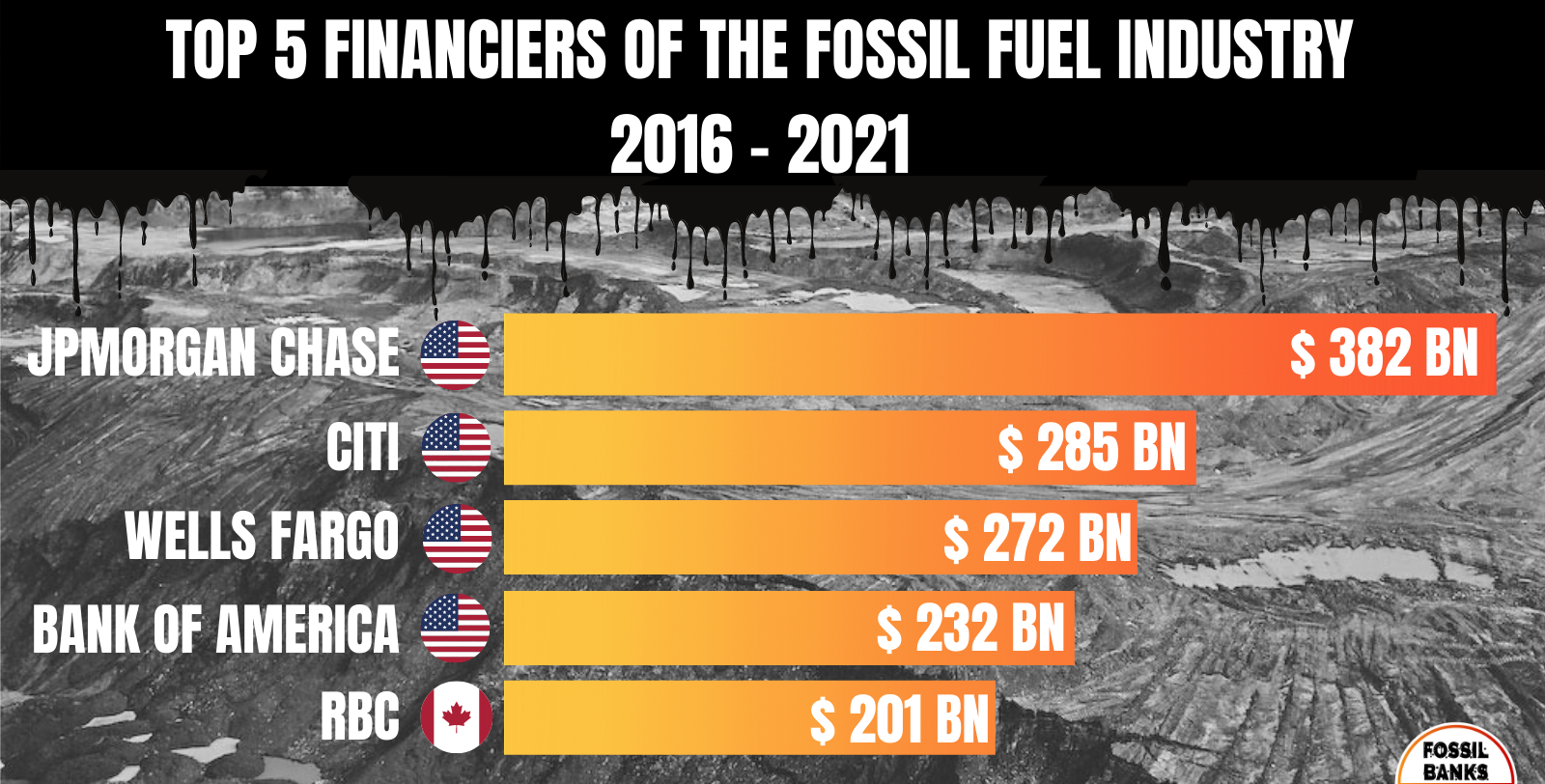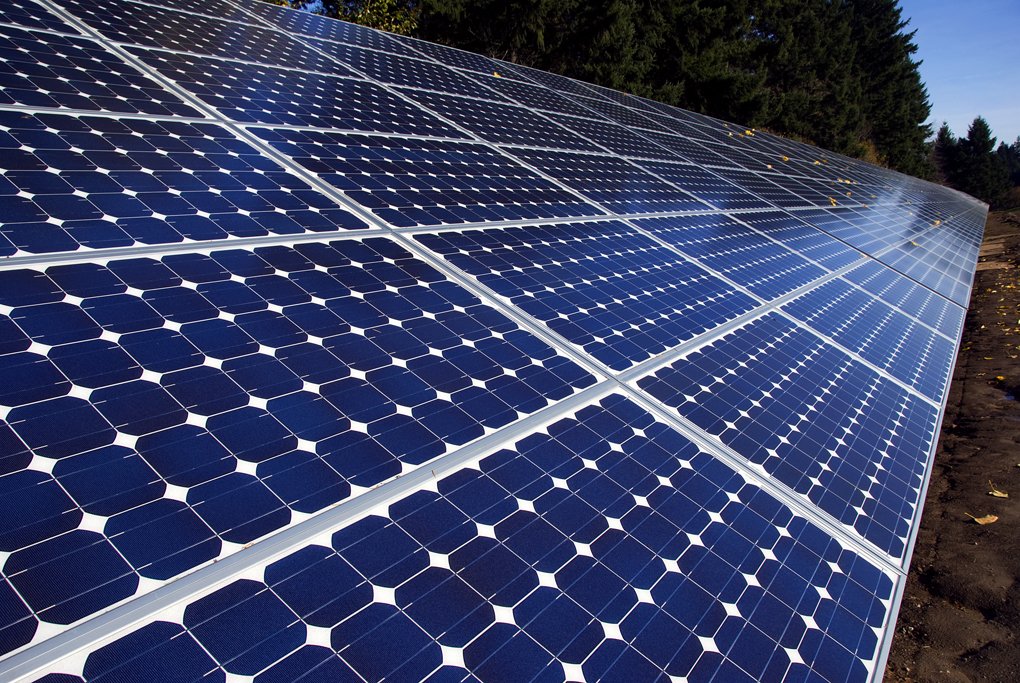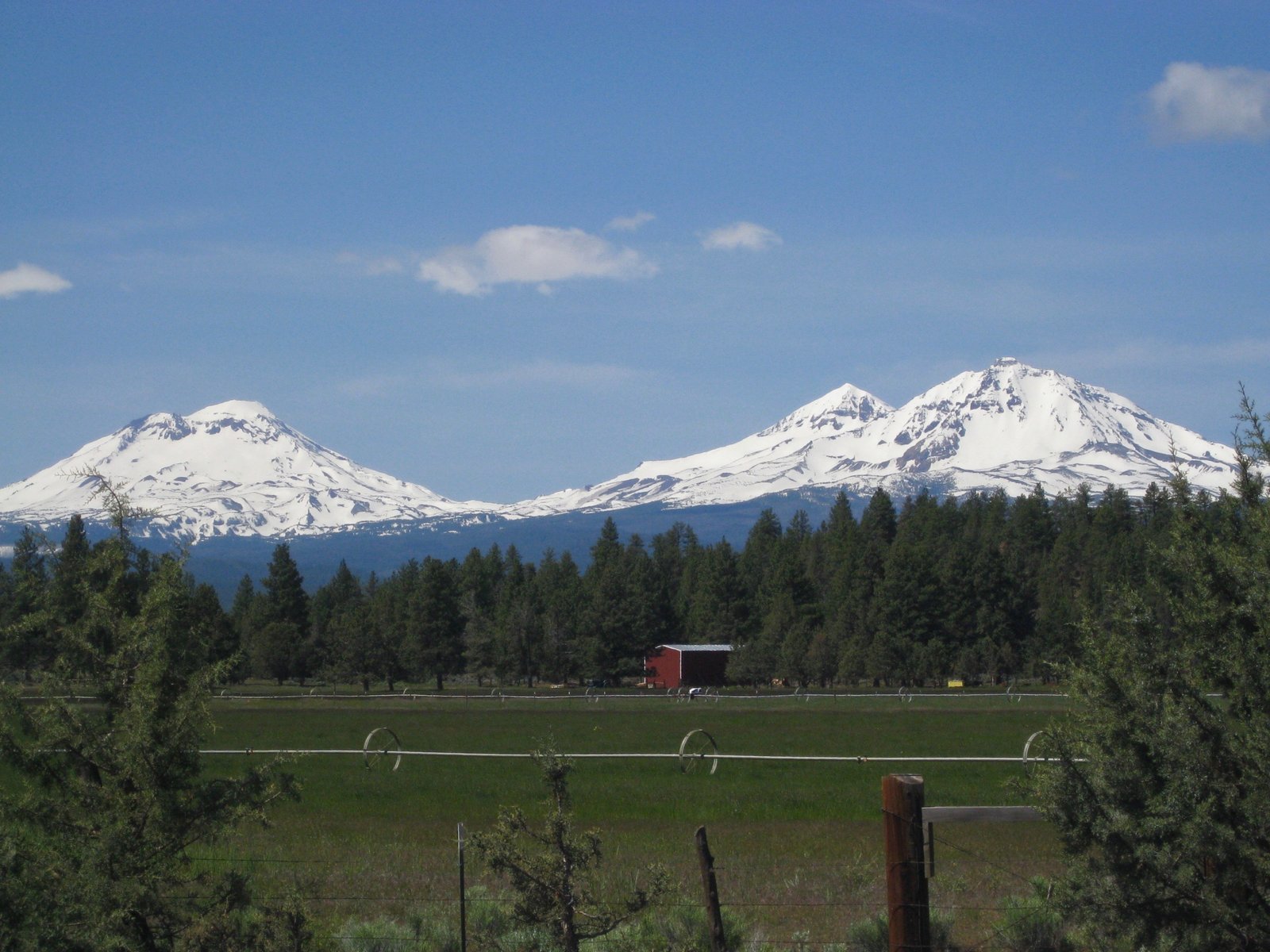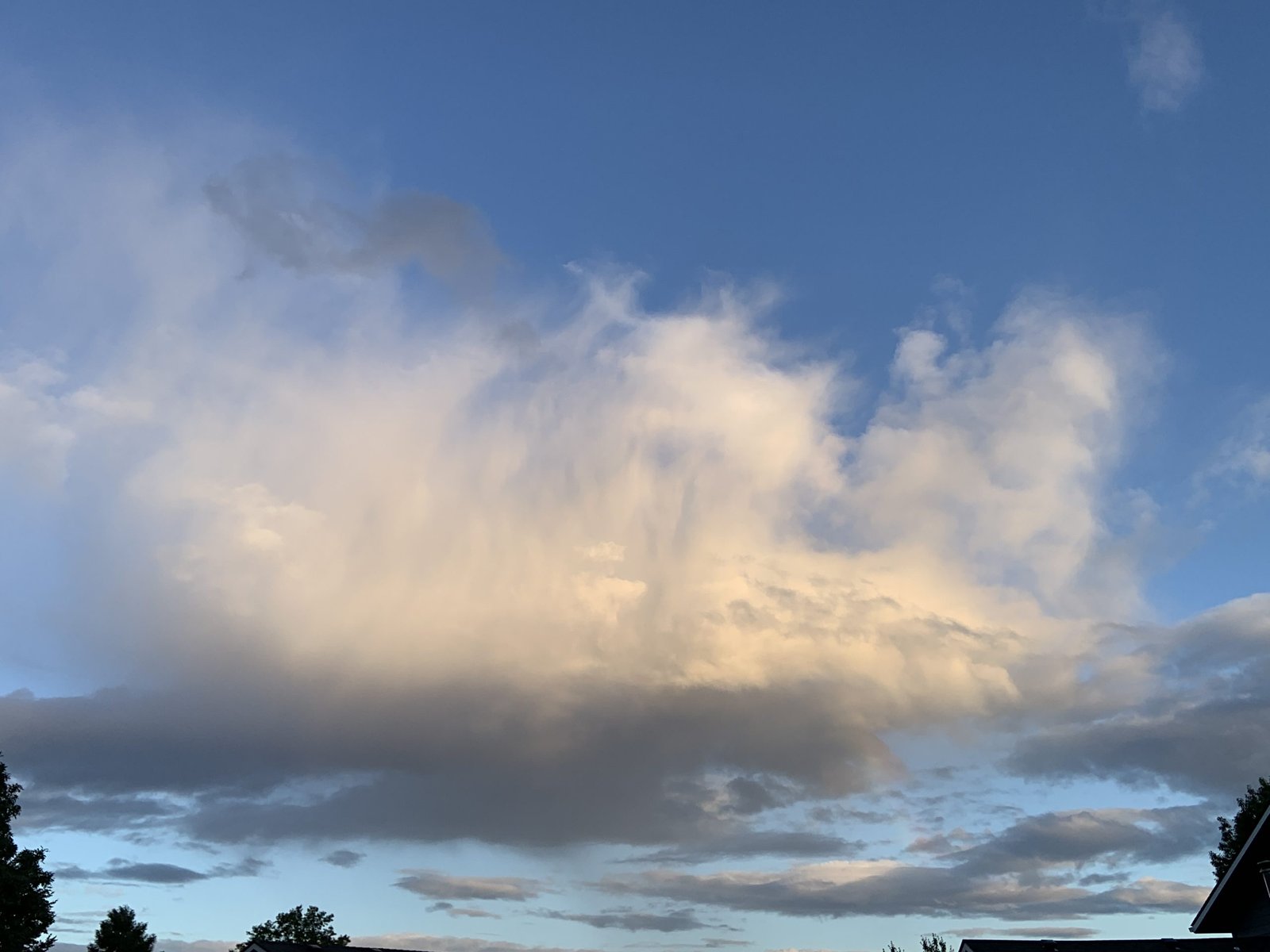Some thoughts on the Inflation Reduction Act
A podcast and transcript on the historic passage of the climate policies in the Inflation Reduction Act, giving a little history and context to help understand the significance. By David Roberts, August 12, 2022.
The magic of talking
I’m going to suggest you do something that it took me years to do myself: talk about the climate crisis. If it’s something you care about, if it’s on your mind, if you are taking action, if you are worried about the future or excited about some new climate initiative, bring it up. Dr. Katherine Hayhoe, one of the world’s top climate scientists, says talking about it is the most important thing you can do to fight climate change, and I agree. But it can be hard to get started, so I’m going to lay out her argument here to inspire you, and suggest that you might be surprised how people respond (in a good way).
The first time I spoke up to a stranger about my climate work, I remember exactly where I was, and that I’d been doing climate advocacy for many years by then. I’m conflict avoidant, and I think I was afraid of eliciting a negative reaction. And I’m not alone: according to the most recent polling data from the Yale Climate Communication program, global warming is important to 71% of Americans, yet 61% say they rarely or never talk about it!
It’s vital that we speak up. In her new book Saving Us, Dr. Hayhoe asks, “What do we talk about? Things we care about…(our speech) displays what we are thinking about to others, which in turn connects us to their minds and thoughts. So if we don’t talk about climate change, why would anyone around us know we care—or begin to care themselves if they don’t already? And if they don’t care, why would they act?”
Speaking about climate signals to those in our communities that climate change matters, and this has incredible ripple effects. Conversely, studies have shown that self-silencing on climate leads us to consistently underestimate how much others care about climate change, and the more we underestimate other people’s climate worries, the more hopeless we feel. Speaking up breaks this cycle, empowering us to feel we can make a difference because we are not alone.
Another way to understand the power of talking about climate change is to remember that we are social creatures, influenced in a million large and small ways by our friends, families, and communities. Each time you talk about caring and acting on climate, you are sending a signal that encourages others in your social network to care and act. For example, someone is more likely to install solar panels on their home if others in their neighborhood have already installed them. This isn’t just because the panels are visible, it’s also because neighbors talk to each other about why they went solar, the installation process, and the benefits.
How do you start, and what might you say? Dr. Hayhoe suggests simply sharing personal stories about your concerns, experiences, and actions. She says, “What do people pay attention to most? In general, we tend to favor personal stories and experiences over reams of data or facts. In fact, when you hear a story, neuroscientists have found, your brain waves start to synchronize with those of the storyteller. Your emotions follow. And that’s how change happens.”
For my part, I believe that any kind of talking is a good start. Things I’ve recently been chatting about include the electric barbecue we just got because we are working on electrifying our home, my worries about the coming fire season, and the Banking on our Future Pledge I signed to support banks that do not invest in fossil fuel expansion.
One reason we self-silence about global warming is that we are afraid of a negative reaction. In my experience, this fear is largely unfounded. As long as I avoid preaching and instead talk about my own concerns or actions, people react positively. Often, they seem to feel heartened that they are not alone in their climate worries. The first time I spoke up to someone I barely knew about my climate advocacy work, she looked back at me and said, good for you! At the time I felt liberated to finally be open. Now I look back on that moment and imagine that I may have played a small part in nudging her toward becoming more engaged in climate action. It certainly didn’t hurt.
BANKING ON OUR FUTURE!
Four big banks–Bank of America, Chase, Citibank, and Wells Fargo–are helping finance the climate crisis by supporting new oil, gas and coal projects. But these banks rely on their credit card and banking customers like you to stay in business. By signing the Banking on our Future pledge, you’re urging these banks to stop funding climate chaos, otherwise you will stop banking with them. If you have a credit card with one of these banks, you will cut it up. If you don’t bank there now, you pledge you won’t do so in the future.
TAKE THE PLEDGE!Why this action is so important: In 2021, the International Energy Agency stated that in order to meet the Paris climate targets there can be no new investments in oil, gas, or coal, starting immediately. Yet since the climate accords were signed, Chase, Citi, Wells Fargo and Bank of America have loaned the fossil fuel industry a trillion dollars with no plans to stop. We, as their customers, have the ability to convince them to do the right thing for all our our futures.
Once you’ve signed the pledge, here are two next steps you can take to amplify the impact of this action:
First, If you do have a credit card with Chase, Citicard, Bank of America, or Wells Fargo, apply for a new credit card with a better bank now. Once you have a new card, you’ll be able to switch cards and cancel your card with these climate outlaw banks. To find a good option, use Green America’s list of credit cards issued from banks that don’t lend to fossil fuel companies. Both Beneficial State Bank and Amalgamated Bank offer climate-friendly credit cards with no annual fee.
If you’d like to do more, please share the Banking on our Future pledge with your network! Third Act has a Banking on our Future Page with all the resources you need to learn about the action and share with others.
TAKE THE PLEDGE!Additional Resources:
To learn more about this action, watch a 3-minute video from THIRD ACT: Banking on Our Future
An overview of the connection between financial institutions and the climate crisis, from the New Yorker
Bank.green, a tool allowing you to check your bank’s fossil fuel financing record.
Green America’s List of fossil fuel-free credit cards.
MAKE A PLAN TO ELECTRIFY!
Perhaps the most high-impact personal climate action you can take is to begin electrifying the machines that you use every day. Climate experts agree that every path to preserving a livable future and restoring safe climate requires us to electrify everything we can as soon as we can. You can help!
Decide today that the next time one of the gas-powered machines in your life needs replacing, you will switch to an electric version.
One year after the passage of the Inflation Reduction Act, we are seeing many signs of progress, and have a clearer picture of what what we need to do next. Rewiring America’s PACE OF PROGRESS report examines the state of clean energy and electrification today and how much we need to pick up the pace of electrifying. This report can help you get inspired and commit to your next step to electrify!
TAKE ACTION: Read Rewiring America’s #Pace of Progress report. One year in, how are we doing on electrifying our homes and cars, and installing solar panels on our roofs?
PACE OF PROGRESS REPORT!Cars, stoves, water heaters, air conditioners, washers and dryers, and even gas barbecues all have efficient, reliable, and increasingly affordable electric options. Provisions in the IRA are designed to make all these electric machines cheaper to purchase. You can decide today that the next time one of the gas-powered machines in your life needs replacing, you will switch to an electric version.
Electric motors are more efficient than fossil fuel-fed motors, and emit no pollutants when in use. Forty percent of U.S. electricity already comes from carbon-free sources, and this percentage is growing rapidly each year. Make a commitment to electrify something. From a single-burner induction cooktop to a heat pump water heater to an EV, each machine that goes electric helps speed the clean energy transition.
If you have more time, find your incentives with the Inflation Reduction Act Savings Calculator! Plug in your zip code, household size and income, and a few other details and this tool shows you all the money you can get from the Inflation Reduction Act to electrify, increase energy efficiency, and decarbonize.
IRA SAVINGS CALCULATORHere are four additional resources to learn more about the Inflation Reduction Act and the vital role of electrification in climate action:
The Electric Explainer: Key programs programs in the Inflation Reduction Act and what they mean for Americans, Rewriting America Policy Hub
The Biggest Climate Bill of your Life – But What does it DO!? 22-minute video from Hank Green (it’s long but it’s the best and most entertaining explanation of the new climate bill I’ve seen!)
Most fossil fuel energy is wasted–New analysis shows how to fix this! Power Up for Climate Solutions blog, August 28, 2020
One Billion Machines that will Electrify America 12-minute video from Saul Griffith
What’s next for Power Up for Climate Solutions
In 2022, Power Up for Climate Solutions will be providing resources for decarbonizing at home and in your community, and building resilience in the face of growing climate instability. We will be placing less emphasis on national and international climate policy action. The reasons for this shift are explained below, and we hope you will find our new direction useful in this time of growing accessibility of clean energy techologies and increasingly catastrophic and frequent climate disasters.
The world has changed dramatically in the last few years. Three truths about the moment we live in inspire our new focus on direct decarbonization and building resilience.
First, technological and economic barriers to a clean energy transition have lowered dramatically for Americans in middle and higher income brackets. The speed of technological and economic changes in clean energy has outpaced even optimistic predictions, and as a result, decarbonizing home energy and transportation is feasible at a personal and local scale for many of us. The impacts of climate change fall most heavily on those least responsible, harming the most vulnerable among us. We will be encouraging those who have some privilege to begin decarbonizing or to help others afford to do so.
Renewable resources generated only 19 percent of US electricity in 2020, but climate experts and modelers increasingly contend that a 100 percent renewable energy grid by 2050 is “not only feasible but can be done without any blackouts and at a lower cost than the existing grid” (Nikita Amir, “The US could reliably run on clean energy by 2050”). We will be providing tools for you to contribute to this transition.
Second, the climate crisis is here now. The speed of warming and the magnitude of climate-fueled disasters has touched everyone I know in recent years. In 2021 alone, the US experienced twenty major weather disasters as defined by NOAA. These included the February winter storms causing the power grid in Texas to fail; a severe and widespread drought in the West; the Bootleg and Dixie fires in California, so bad they generated their own weather; Hurricane Ida; the historic and deadly heat dome centered over Oregon, Washington, and Canada; and the Midwest derecho and tornado outbreak in December with more than fifty tornados. The imperative to strengthen our resilience in our homes, our food systems, and our communities to deal with climate instability is urgent.
Third, our political system has failed to head off a worsening climate crisis that threatens everything we need to survive and thrive. As Ezra Klein succinctly observed, “Decades of climate activism have gotten millions of people into the streets but they haven’t turned the tide on emissions, or even investments.” National politics in the US are more toxic and our culture is more divided than at any other time in my lifetime; the odds of major climate policy being enacted by Congress in 2022 appear minuscule. I believe the biggest opportunities for climate progress right now are in other arenas.
The resources we will be sharing will offer ways to contribute to the clean energy transition and guidance for building resilience at home and in your community. Examples may include individual, community, and business clean energy programs; regenerative agriculture; clean electrification resources; electric vehicle information; information on divestment from fossil fuel companies; and climate resilience resources. I hope that the resources and ideas we share will provide support and allow you to find ways to contribute to a clean energy transition, become more resilient in your home and your community, and help create a safer, more peaceful, more equitable world.
EMAIL FOR CLIMATE ACTION TODAY!
Citizens’ Climate Lobby (CCL) has an easy-to-use tool you can use to email your Congressional Representatives to urge them to act on climate. Unlike many other groups, CCL allows you to opt-out of getting on their mailing list, so you can take this action without increasing your email burden!
Use the link below to contact your Congressperson and Senators and urge them to pass additional bold climate policies that will open a path toward meeting our commitment under the Paris Climate Accords.
TAKE ACTIONFollow the easy instructions to email your elected officials! An email will be provided which you can send as is or personalize for even greater effectiveness. The more voters they hear from, the more likely it is that Congress will pass climate policies that truly meet the moment.
Many powerful interests are fighting to weaken and derail these efforts. YOU can help by letting Congress know you want them to pass sweeping, bold action tackling the climate crisis!
Power Up for Climate Solutions is back!
It’s good to be back! After five months off from climate advocacy following the train wreck known as 2020, our organization is coming back online. Thank you for sticking with Power Up for Climate Solutions during the break. I hope that you are feeling some sense of renewal and hope as we enter summer, as I am. Yet as the heat wave that smothered and scorched the Pacific Northwest inches eastward, I also feel a renewed sense of of the scale of the climate crisis we are facing and the challenges ahead. So with this clarity and sense of urgency, let me tell you about our organization’s next steps:
Power up for Climate Solutions will continue to focus on providing tools, information, and inspiration to help you engage in climate action. We will continue to emphasize actions that build political and societal will for enacting effective national climate policies while sometimes including personal and community actions. We remain committed to unifying around any and all fair and effective climate policies as long as they protect the most vulnerable among us.
We are bringing back our climate action invitations and our blog, with a new schedule. We will send you climate actions only when we have something really important you can do, so frequency will vary. Some months you may receive several actions, and some months you’ll receive none. This will allow us to send only actions we feel are especially impactful. The blog will come out six times a year instead of twelve. We will continue to have a social media presence on Twitter, Instagram, and Facebook, but with less frequent postings.
Starting this fall, we will be introducing a new initiative: Climate Circles. I’ll be offering these experimental circles to anyone interested in bringing a small group of friends, family, or colleagues together for monthly gatherings to connect, learn, and take action on climate solutions.
Climate circles are intended to be fun, flexible, and focused on learning something and taking action at each gathering. The format will be adaptable to meeting virtually or in person, and will be flexible to meet the needs of each group. This program will start small, but in time I hope to make it available to anyone who is interested.
As I write to you, it’s a much more uncertain time for climate action than it’s been in a very long time, and that’s a good thing. Anything (or nothing) is possible. We have the largest majority of Americans ever who are worried about the climate crisis and want government action. We have a president who understands the science and the urgency. We have ever-improving technological and policy tools to undertake rapid decarbonization and ways to do it that will be good for people. At the same time, we have a divided government and problems with misinformation and mistrust. We have challenging divisions within the climate community and a vocal and powerful minority fighting hard against a clean energy transition. I hope you’ll stay with us. I’m excited to get back to work. Let’s make rapid decarbonization and solving climate change the story of the next decade.
We are taking a winter break!
Power Up for Climate Solutions is taking a winter break. It’s time for us to rest, reassess, and realign our efforts with the rapidly evolving social, political, and climate landscape of 2021. For the next few months we are pausing our monthly actions, blog posts, and social media updates. We will return in spring reenergized and with new perspective on the most impactful role we can play in promoting climate solutions that is sustainable for our organization.
We recognize that making meaningful progress on the climate crisis is tremendously challenging as the pandemic, the economic crisis, the racial justice crisis, and deep social and political divisions in the U.S. create havoc and hardship. We hope that in the next four months, the trajectories of these multiple crises will begin to improve and provide an opening for action on climate. A functional government may emerge and create opportunities to enact policies for decarbonization and a green recovery strengthened by a re-invigoration of our international relationships. As this happens, it will be clearer how we can be most effective in contributing to climate solutions.
On a personal note, I’ve been a climate writer and advocate since 2006. I am passionate about this work, but it has never been easy. The erosion of climate progress, the suppression of science, the ugliness and lawlessness of this administration have taken a toll. And as is true for everyone I know, I have suffered painful losses this year, and am worn thin from the multiple catastrophes of 2020. I need some time to recharge.
I hope to come back with fresh eyes, renewed energy and a clearer sense of how Power Up for Climate Solutions can contribute to a safer, healthier, more just world where people and life can thrive.
Thank you for being part of this organization. I hope you are able to take good care of yourself this winter. Expect to hear from us in mid-April, 2021 with an update on what comes next from Power Up for Climate Solutions. Thanks for your patience and support, and for all you do for climate action.
My deepest gratitude and warmest winter wishes to you.
YOUR MONEY AND OUR CLIMATE!
No matter how much money you have, how you save and spend is important for the climate. Below are three actions you can take to ensure that your money is supporting climate solutions.
Action ONE: Use the Bank Green tool to learn if your bank is using your money to fund climate chaos:
CHECK ON YOUR BANKTaking this action will allow you to decide whether you feel good about where you bank, or whether to consider opening a new account at a better bank.
Action TWO: Chase Bank, Wells Fargo, Citi, or Bank of America are funding fossil fuel exploration, extraction, and transport. If you have a credit card from any of these banks, apply for a new credit card today, and start your switch to a climate-friendly credit card.
Find a climate friendly credit card that’s right for you!
BETTER CREDIT CARDSChase Bank, Wells Fargo, Citi, or Bank of America make big money off their credit card customers; switching cards sends a powerful message to banks that it’s time to stop funding fossil fuels once and for all. (Many of the credit cards listed at the link above offer cards with no annual fee, including Beneficial State Bank and Amalgamated Bank.)
Action THREE: If you are in a position to make donations for climate action, Giving Green provides recommendations on organizations maximizing their impact on climate. See their list and choose one or more groups to give to:
See Giving Green’s recommendations for climate donations:
FIND TOP CLIMATE DONATIONSFor more information about supporting climate action with your money, see additional resources below:
Money is the oxygen on which the fire of global warming burns
Stop the money pipeline campaign
Divesting from fossil fuel investments:
Earthfolio Sustainable Investing
Changing the odds: Rebecca Solnit on hope and action in dark times
I’ve long admired Rebecca Solnit’s writing, and today I want to share some excerpts from her essay in The Guardian, “Climate change, Covid–our hearts ache. But a new era is possible. We can do it,” to inspire you. If you want more, you can read the full article here.
As a human and a climate advocate, I feel like I’m holding my breath. Climate chaos is here. Our chance of preserving a climate compatible with thriving human societies depends on electing climate champions in November and compelling them to enact transformative climate policies immediately. We may already be too late. The question Solnit addresses is, with compounding crises causing so much suffering, how do we keep hope alive and act on it?
She acknowledges that in this moment, it is tempting to give up: “The last four years have been a long, rough road for people who care about the fate of the earth and the rights of ordinary people, and I understand the temptation to feel that what is wrong now will be wrong forever, to feel that it is too much to face and more than we can change.”
But, Solnit says, “anguish and hope–hope as ferocious will to continue, and not trust the odds but to change them–can coexist.”
At this crucial moment for humanity, Solnit makes the case for hope along with anguish, and for acting on that hope; “In the US we are facing a crucial election. As humanity, we are facing even a larger one: to respond to the climate crisis by choosing the best-case scenario rather than letting the worst unfold.”
As I’ve written about here and here, we are rapidly developing viable and affordable policy and technology pathways to move us toward the best-case scenario. These pathways are becoming more attainable all the time. For example, Solnit notes that the left is converging around a set of climate policies originally associated with the Green New Deal, and these policies are gaining wide acceptance:
“In the USA, the Green New Deal is among the ideas that were only recently regarded as almost outrageously radical – ie a disruption of the status quo – that are now widely accepted by politicians and the public as necessary. ‘The climate plan is a jobs plan,’ Biden’s spokesperson told the Guardian. Julian Noisecat wrote that Biden has accepted the Green New Deal in all but name.”
Other viable and effective climate policies are gaining momentum as well. We now know that taking climate action will have a host of other benefits. Solnit quotes Senator and climate champion Brian Schatz (HI) about the benefits of bold climate action:
“Responding could bring about a more just society, Hawaii senator Brian Schatz recently tweeted: ‘Too much of the climate movement of the past was about what climate change is doing to us, and not about what climate action will do for us. Taking action does not require austerity and scarcity. Done well, it will result in more wealth, more fairness, and better jobs. We already have many of the technologies needed to avert catastrophe. We just need the American optimism and the political will to deploy them on an unprecedented scale. What we are describing is a future with an improved quality of life, more fairness, and better products. If we do this right, the people and communities that have been treated unfairly, exposed to chronic pollution, and left out of progress in the past stand to gain the most.’”
The heart of Solnit’s message is this: at this most critical moment, whatever pain you are in, choose hope too. Do all you can to elect climate champions, then do all you can to get them to act on climate. Hope is not optimism. Hope is a commitment to the future, and must be manifest in action. Hope matters most when it’s hardest and when the stakes are the highest. This is our moment.









